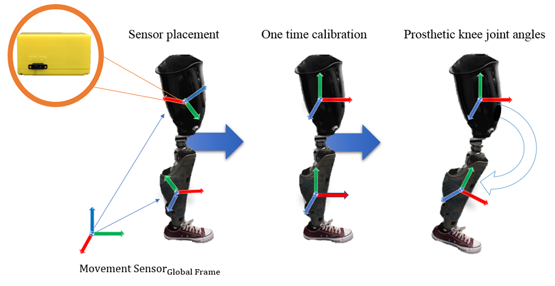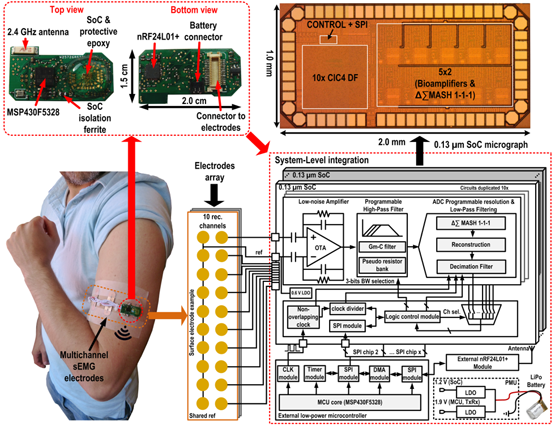Reports on Past IEEE Life Science Events
By Benoit Gosselin, PhD, Ing. Technical Program Chair Life Science Conference 2018
Life Science Conference ’18 Montreal
This year, the IEEE Life Sciences Conference (LSC) was organized by Dr. Mohamad Sawan and Dr Carolyn McGregor, General co-chairs, in Montreal, Canada, on October 28 – 30. With more than 150 delegates and authors from all around the world, the conference was a great success! The conference program included 3 keynotes, 8 tutorials, 12 regular lecture and poster sessions, 6 invited lecture sessions and 2 panel sessions on the several innovative topics at the forefront of the discipline, including novel biosensors, smart medical devices, new assistive technologies, bioinformatics, etc. The attendees enjoyed great food and great music at the Conference diner, in the heart of the beautiful city of Montreal. Congratulation to the six Best paper and Best poster awards winners, and warm thanks to all for making this conference a great success, especially to the organizers, the program committee members, the review committee members, the authors and all the delegates!
LSC’18 Student’s Paper Competition Feature
At the IEEE Life Science Conference 2018, held in Montreal, Canada, from 23 to 30 October, Keri McNiel (University of Alberta, Canada), and Gabriel Gagnon-Turcotte (Laval University, Canada), both received best paper awards (1st place and 2nd place, respectively) for their work on the design of smart wireless sensors dedicated to improve and control prosthetic technologies.
M. Keri, A. W. Shehata, Q. A. Boser, A. H. Vette, and J. S. Hebert, “Development and Verification of a Low-Cost Prosthetic Knee Motion Sensor,” in 2018 IEEE Life Sciences Conference (LSC), 2018, pp. 283–286.

Fig. 1: Concept of the sensor that can detect when a single-axis prosthetic knee is in motion.
Keri McNiel’s paper entitled “Development and Verification of a Low-Cost Prosthetic Knee Motion Sensor” presents a wireless sensor for detecting when prosthetic knee is in motion. Indeed, limb amputation affects many individuals across the world, with the majority of amputations occurring in the lower limb. Healthy individuals with intact limbs have biological sensors embedded in their anatomy to interact with the environment and to facilitate stable walking. Lower-limb prosthetic users lose these embedded sensors, leading to decreased balance and an increased risk of falling, abnormal gait, and decreased quality of life. Tactile and kinesthetic sensory feedback techniques are being investigated for upper-limb prosthetic users and may soon translate to lower-limb users. A barrier to implementing these techniques is the lack of adequate instrumentation of lower-limb prostheses. The objective M. McNiel research was to design and develop a low-cost wireless system, using inertial measurement units, which can detect when a single-axis prosthetic knee is in motion. This sensor could be used to communicate the movement of a prosthetic device to actuators responsible for providing feedback to the user. M. McNiel results indicate that the device is capable of tracking the onset and termination of movement at normal walking speeds.
G. Gagnon-Turcotte, C. L. Fall, Q. Mascret, M. Bielmann, L. Bouyer, and B. Gosselin, “A Multichannel Wireless sEMG Sensor Endowing 0.13-µm CMOS Mixed-Signal SoC,” in 2018 IEEE Life Sciences Conference (LSC), 2018, pp. 1–4.

Fig. 2: System-level concept of a wireless multichannel sEMG sensor, which is built around a custom SoC. The 0.13 μm CMOS SoC includes 10 sEMG recording channels, each of which includes a low-noise bio-amplifier, a Δ∑ MASH 1-1-1 ADC and a DF. Each recording channel is differential with one shared electrode, the latter of which is connected to a 0.6-V on-chip LDO output providing the body reference. The SoC is interfaced with an MSP430F5328 low-power MCU through an SPI bus. Hence, multiple SoC can be connected on the same bus to increase the resolution. The SoC micrograph is also shown.
Gabriel Gagnon-Turcotte’s paper entitled “A Multichannel Wireless sEMG Sensor Endowing a 0.13 μm CMOS Mixed-Signal SoC” presents a wireless low-power multichannel surface electromyography (sEMG) sensor featuring a custom 0.13-μm CMOS mixed-signal system-on-chip (SoC) analog frontend circuit for muscle activity discrimination. The proposed sensor includes 10 sEMG recording channels with tunable bandwidth and analog-to-digital converter resolution. The SoC includes 10 low-power & low-noise bioamplifiers, 10 low-power 3rd order Δ∑ MASH 1-1-1 ADC, 10 on-chip 4th order cascaded integrator-comb decimation filter (DF), and a logic module encompassing a serial peripheral interface (SPI) slave module. This SoC provides the sEMG samples data through a SPI bus to a lowpower MSP430F5328, Texas Instrument, USA, microcontroller unit (MCU) that then transfers the data to a nRF24L01p, Nordic Semiconductor, Norway, wireless transceiver. M. Gagnon-Turcotte report sEMG waveforms acquired using a custom multichannel electrode module, and a comparison with a commercial grade system. Experimental resultsdemonstrate that the proposed system has better or equivalent characteristics (input-referred noise, bandwidth, power consumption, sampling rate, etc.) than the other available wireless systems, while being smaller and lighter. The sensor has an input-referred noise of 2.5 μVrms (BW of 10-500 Hz), an input-dynamic range of 6 mVpp, a programmable sampling rate of 2 ksps, for sEMG, while consuming only 7.1 μW/Ch for the SoC (1.2-V, w/ ADC & DF) and 21.8 mW of power for the whole sensor fully working (1.9-V, Transceiver, MCU, etc.). The SoC is wirebonded directly on a 1.5 x 2.0 cm2 printed circuit board, and the whole system weights < 1 g (w/o battery). In future works, M. Gagnon-Turcotte intend to use this sensor for robust muscle activity discrimination for prosthesis control.
 Benoit Gosselin, PhD, Ing.
Benoit Gosselin, PhD, Ing.
Technical Program Chair
Life Science Conference 2018






